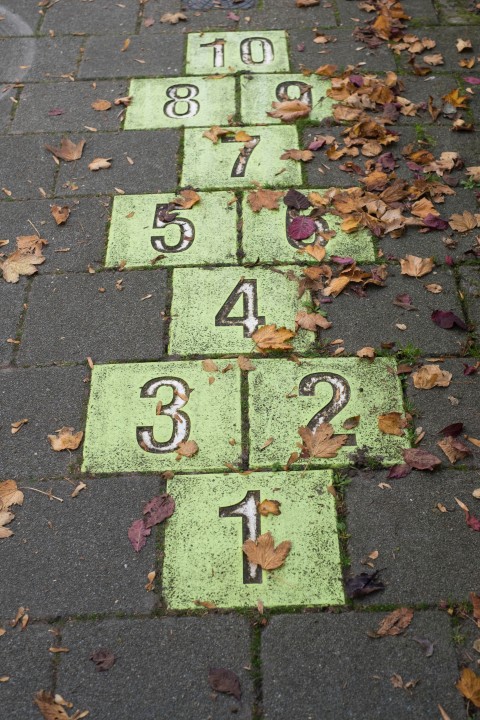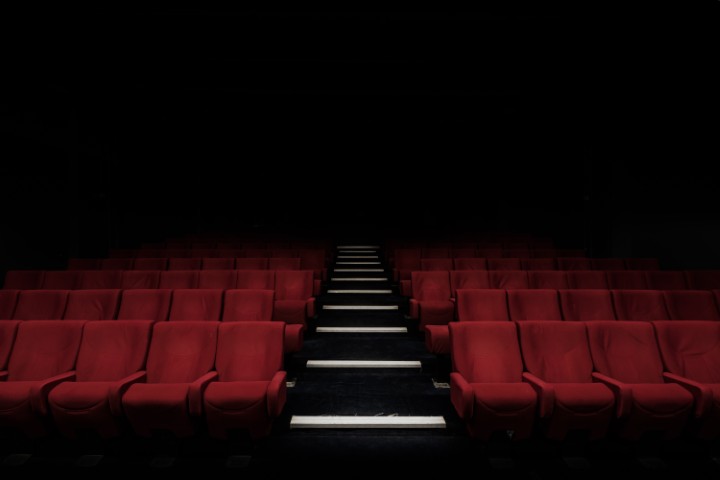
Though we often fail to realize it, halakhah is a language that shapes the world of those who speak its words. Both Rav Shagar and Rabbi Joseph Soloveitchik are sensitive to this but the difference in their approaches have radical implications for the way we experience halakha in our lives.
Zachary Truboff
About halfway through my wife’s pregnancy, our twins were diagnosed with a rare disease known as Twin to Twin Transfusion Syndrome. Instead of drawing blood equally through a shared placenta, one twin takes too much putting the lives of both in danger. It’s a harrowing diagnosis without easy solutions. After receiving the news, my wife and I spent nearly every free moment in the hospital, hoping and praying for the best. Each day was an agonizing roller coaster of emotion, as perhaps is to be expected.
What caught me by surprise, though, is that our time in the hospital was monopolized not only by tests and treatments but also by the language of halakhah. Nearly every day raised serious halakhic questions that often lacked straightforward answers. It felt as if the words of halakhah were constantly on my lips, and I came to see halakhah not only as a collection of norms but as a language in its own right. In my darker moments, when it felt as if my world was collapsing, the language of halakhah provided me with something firm, solid, and even holy to grasp hold of. However, there were also moments when the words of halakhah sounded foreign to my ears, babbling nonsense attempting to force itself upon me. At those times, I was left feeling perilously distant from God and Torah.
In this essay, I want to explore the ramifications of viewing halakhah as a language through the thought of three important religious thinkers: Rav Shagar, Rabbi Jospeh Soloveitchik, and Peter Berger. Each one offers their own unique insights into the nature of religious language, and the language of halakhah in particular, shedding light on the role that it plays in Jewish life.
ע
The Language of Halakhah Shapes Our World
Though Hebrew may be the spoken language of the Jewish people, it is the language of halakhah that has traditionally served as the vocabulary for the values and behaviors which shape Jewish life. All languages consist of words and symbols, whose use is determined by an underlying set of rules we call grammar. In this sense, halakhah is no different. Its words, symbols, and grammar originate in the Written Torah, develop through the Oral tradition, and undergo ongoing interpretation through sheilot and teshuvot.1
Understanding halakhah as a language enables us to recognize its unique power. According to the Torah, language serves as the vehicle for creation. God speaks, and the world comes into being. Kabbalah further developes this idea and explains that not only God’s speech but the Hebrew letters themselves function as the building blocks of creation. However, one does not have to take the Torah literally or be a mystic to appreciate that world-building power of halakhah for those who speak its words. For Rav Shagar, the language of halakhah shapes our world, because language mediates our experience of reality. We cannot see or experience the world without language. As Rav Shagar explains, “We don’t see things as they are, rather we see the words and definitions that encompass them… When we see a chair, we say to ourselves without speaking ‘here is a chair.’ We don’t see the chair in its details: seat, legs, back; we see a ‘chair.’”2 The implications of this, he explains, are enormous. If language shapes the way we experience the world, then “Different language will produce different pictures of the same world – life in English is different from life in French or life in Hebrew.”3 The same is true for life in halakhah. “Halakhah not only takes reality into account” Rav Shagar explains, “but also influences the way in which we conceive of reality, in a manner similar to ‘God looked inside the Torah and created the world.’”4 To demonstrate this, he offers the following example:
I used to live close to the bakery in Jerusalem’s Beit Yisrael neighborhood. On Fridays, I would buy halla there for Shabbat. I once witnessed a man exit the bakery with a halla, which he proceeded to tear apart and devour. I was shocked. The very same holy Shabbat halla that we would cover during Kiddush, to spare it the humiliation of knowing it was not the first to be blessed was being raped! To me, the halla is not merely a loaf of bread; its context turns it into something entirely different – a Shabbat halla, one whose very flavor differs from that of commonplace bread.5
At first glance, it’s easy to make light of the seriousness with which Rav Shagar treated the “violation” of the halla. However, he is certainly not alone in his thinking that language profoundly shapes our world. His insights are matched by the noted sociologist of religion, Peter Berger. Language, according to Berger, fashions our experience of reality “by imposing differentiation and structure upon the ongoing flux of experience. As an item of experience is named, it is ipso facto, taken out of this flux and given stability as the entity so named. Language provides a fundamental order of relationships by the addition of syntax and grammar to vocabulary. It is impossible to use language without participation in its order.”6 Once the language of halakhah designates the bread as halla, it takes on a new association of inescapable meanings.
It is important to note that for Rav Shagar, the language of halakhah not only seeks to describe the world but also projects on to it an objective spiritual order that becomes as real to us as the physical world. Those who live within the language of halakhah viscerally experience the way it infuses their lives with a sense of transcendent spiritual meaning. It “constructs a world through which one can come to know God – faith becomes a concrete fact of one’s life.”7 A similar notion is expressed by Rabbi Joseph Soloveitchik in Halakhic Man, his extraordinary meditation on the meaning and purpose of halakhah. He explains that “When halakhic man approaches reality, he comes with his Torah, given to him from Sinai, in his hand. He orients himself to the world by means of fixed statutes and firm principles.”8 In other words, Halakhic Man experiences reality through the language of halakhah with profound spiritual connotations. He describes an intriguing incident in Halakhic Man that captures this phenomenon, and it has many of the same resonances as Rav Shagar’s description of the halla.
I remember once how on the Day of Atonement, I went outside into the synagogue courtyard with my father [R. Moses Soloveitchik], just before the Ne’ilah service… Evening was fast approaching, and an exquisite autumn sun was singing in the west, beyond the trees of the cemetery, into a sea of purple and gold. R. Moses, a halakhic man par excellence, turned to me and said: “This sunset differs from ordinary sunsets for with it forgiveness is bestowed upon us for our sins” (the end of the day atones). The Day of Atonement and the forgiveness of sins merged and blended here with the splendor and beauty of the world and with the hidden lawfulness of the order of creation and the whole was transformed into one living, holy, cosmic phenomenon.9
For anyone else witnessing the sunset, it was an opportunity to take in the incredible beauty that the natural world occasionally discloses to us. However, Rabbi Soloveitchik explains that the language of halakhah transforms the sunset into much more than just aesthetics. As the sun dips beneath the horizon, the Jewish people achieve forgiveness, purity, and even holiness. Consequently, the sunset pulsates with sublime reverberations.
As we struggled with the complications of my wife’s pregnancy, we found that invoking the language of halakhah while in the hospital affected a similar transformation of our physical reality. While in the hospital, we quickly discovered that the rhythms of religious life are dependent on dwelling in a space where one feels comfortable and in control over one’s environment. This becomes nearly impossible when surrounded by machines that constantly buzz and beep, unable to move very far on one’s own. Basic religious actions such as tzeniut and tefillah are often impractical at best, futile at worst, turning the hospital itself into a space devoid of holiness. This is compounded by the fact that properly keeping Shabbat in a hospital setting is nearly impossible. Nevertheless, on Friday night we experienced how the language of halakhah allows for one to sanctify Shabbat in any location. Through the recitation of kiddush we were able to imbue our small hospital room with an atmosphere of kedushah, granting us some respite. Cheap rolls were transformed into halla, and a worn hospital tray into a Shabbat dinner table. This small but significant act affected a radical change in our surroundings and provided us an opening into the world of holiness that religious life grants.
כ
The Language of Halakhah Holds our World Together
Language not only shapes our experience of reality, but also serves an even more basic function. It holds our world together, ensuring that reality is firm and solid. As Peter Berger describes it, the language we use in day-to-day life “constructs immense edifices of symbolic representations that appear to tower over the reality of everyday life like gigantic presences from another world.”10 These “immense edifices” give the world its shape, and allow us to orient ourselves within it.
However, there are moments, what Berger calls “marginal situations,” in which the stability of reality is threatened. The most prominent of these is the experience of death, which by nature challenges the order that language seeks to impose on the world. When facing moments like this, the durability of everyday life begins to crumble. We run the risk of becoming “worldless” our lives threatened by the “nightmare par excellence, in which the individual is submerged in a world of disorder, senselessness and madness.”11 For much of human history, the language of religion created a “sacred canopy,” an overarching narrative of order and meaning, which protected the religious believer from being overwhelmed by the chaos of death. The sacred canopy created by religious language enables even death to be subsumed under a broader religious framework, the next step in the soul’s journey to God.
Since the onset of modernity, though, the sacred canopy created by religion has torn. New secular languages have emerged and achieved dominance by offering more compelling explanations of reality than religion. The language of science, for example, has been widely accepted because it has dramatically increased our ability to manipulate the world to our benefit. Modern medicine is perhaps its greatest achievement. In pre-modern times, the boundaries between religion and medicine were often blurred. Prayer and religious ritual could be seen as legitimate attempts to cure the sick. However, this has changed in the last century, as medicine transformed into science leading to remarkable advancements. Nevertheless, the language of science is not without its limitations. It cannot provide the same overarching narrative of meaning that language of religion once offered. As a result, it breaks down when we face profound existential or some might say spiritual questions, none more significant than those that touch upon life and death.
At a time when the traditional religious language of Judaism can no longer provide the sacred canopy it once did, Rabbi Soloveitchik turns exclusively to the language of halakhah in order to build it up once again.12 Like Peter Berger, Rabbi Soloveitchik also senses that there are times when chaos threatens to overwhelm our experience of reality. Basing himself on the midrash, he explains that
When God engraved and carved out the world, he did not eradicate the chaos and the void, the deep, the darkness, from the domain of His creation. Rather, he separated the complete, perfect existence from the forces of negation, confusion, and turmoil and set up cosmic boundaries, eternal laws to keep them apart… However, the forces of relative nothingness at times exceed their bounds. They wish to burst forth out of the chains of obedience that the Almighty imposed upon them and seek to plunge the earth back into chaos and the void.13
In these moments, the only way for the chaos to be contained is through the language of halakhah. He notes that “the Hebrew term for law, hok, comes from the h-k-k (which means ‘to carve, engrave’). Thus the law carves out boundary, sets up markers, establishes special domains, all for the purpose of separating existence from ‘nothingness,’ the ordered cosmos from the void, and creation from the naught.”14 In this way, the language of halakhah reconstructs the sacred canopy, and enables it to provide shelter once more. It offers guidance and norms for any situation that one might encounter, including all of them under a linguistic framework of religious meaning.
This was something I experienced first-hand during our ordeal with the twins. After the initial diagnosis, my wife underwent an experimental laser surgery that appeared to halt the condition. Nonetheless, within a week, it started worsening again. Her water broke, and she was immediately confined to a bed, sensing that the twins were in distress. From that moment on, we felt disoriented, as if our world was coming apart. We knew that the situation was grave. The twins had already undergone potentially damaging trauma and multiple medical interventions. If my wife was to deliver them so prematurely, as appeared likely, they could be profoundly disabled. In addition, my wife’s health was already in poor shape due to complications from the pregnancy. If things continued to deteriorate, her health would also be at risk.
The most challenging moment arrived when we raised the question of whether to terminate the pregnancy. Up until then, we had come to rely entirely on the advice of the doctors on how to proceed. However, when asked for guidance on such an important issue, the doctor made it clear that he had no answers for us. We were completely and utterly on our own. I will never forget sitting in stunned silence alongside my wife. It felt as if a chasm of chaos opened up beneath our feet, and we were precariously perched on its edge. We only were able to regain our footing by turning away from the language of science and towards the language of halakhah. Even in moments of profound uncertainty, when we may seek to pull back from the world, halakhah draws us back into it and demands that we act. Regarding the issue of abortion, halakhah offers a complex moral and spiritual language that speaks to the issue with nuance. The language of halakhah recognizes that the fetus is deserving of protection, but at the same time, it is not yet a human life. Its claims must be weighed against the needs of the mother.
After countless hours of discussion with rabbis and poskim, we came to the conclusion that it would be halakhically permitted to terminate the pregnancy, perhaps even desirable. It was a decision no parent should ever have to make, but one made intelligible through the language of halakhah. The firmness of reality returned to us once more, and we were able to overcome the sense of chaos and terror that had threatened to overwhelm us. Yet, before we had a chance to go through with the procedure, my wife went into labor, and the twins were born. Due to their condition and premature delivery, they died just a few hours later. Once again we felt as if the chaos and void would swallow us whole. For the second time, the language of halakhah provided us shelter. Halakhah mandated both a brit and burial for the twins, forcing us to mourn our loss. I don’t know what we would have done without halakhah in those dark moments, for when other language failed us, halakhah held our world together. Its words provided us with a sense of objective order and meaning that kept the chaos at bay.

“Math is the Language in which God has written the Universe”
Like all languages, halakhah both shapes our world and holds it together, but to fully appreciate the implications of treating halakhah as a language, it is instructive to more closely examine Rabbi Joseph Soloveitchik’s important work Halakhic Man. In it, he compares Halakhic Man “To a mathematician who fashions an ideal world and then uses it for the purpose of establishing a relationship between the ideal world and our concrete environment in all its visible manifestations and underlying structures.”15 While we may not usually conceive of it in this fashion, math too is a language. Its signs and symbols convey clear meanings about the world around us, and its grammar is built upon well-established logical rules. Just as words can be combined into sentences, so too math’s signs and symbols can be combined into equations. What distinguishes mathematics from other languages, is the sense of objectivity that we ascribe to it. Whereas spoken languages can only imperfectly describe the world around us, math claims to reveal the underlying structures of the universe. For Rabbi Soloveitchik, halakhah is no different, as it represents an ideal objective order of holiness. For this reason he makes a direct parallel between the two: “The statement of Galileo that ‘the great book which ever lies before our eyes – I mean the Universe – is written in mathematical language and the characters are triangles, circles, and other geometrical figures’ applies as well to the Halakhah.”16
In the eyes of Rabbi Soloveitchik, the language of halakhah achieves the objectivity of math because “The Halakhah, which was given to us from Sinai, is the objectification of religion in clear and determinate forms, in precise and authoritative laws, and in definite principles. It translates subjectivity into objectivity, the amorphous flow of religious experience into a fixed pattern of lawfulness.”17 Halakhah expresses an objective ideal spiritual reality, which imposes order on human experience. The results of this approach are compelling, for as Rabbi Soloveitchik claims, it enables one even to overcome the chaos and uncertainty of death. Instead of threatening our world, halakhah transforms death into a part of the objective order of existence. He explains, “Death is frightening, death is menacing, death is dreadful only so long as it appears a subject confronting man. However, when man succeeds in transforming death-subject into death-object, the horror is gone… When halakhic man fears death, his sole weapon wherewith to fight this terrible dread is the eternal law of the Halakhah. The act of objectification triumphs over the subjective terror of death.”18
Rabbi Soloveitchik imagines a powerful vision for the language of halakhah, but his conception of it as an ideal a priori language is nevertheless problematic. This point can be seen by carefully analyzing a story that he relates in Halakhic Man about his grandfather, Rabbi Elijah Feinstein. For some time, Rabbi Feinstein’s daughter had been seriously ill, and while immersed in his morning prayers, he receives word that his daughter was close death.19 Upon hearing the news, he quickly goes to her room and calmly asks the doctor how much time she has remaining. After hearing the doctor’s response, he determines he has sufficient opportunity to take off his Rashi tefillin and put on his second pair of Rabbeinu Tam tefillin. In doing so, he is able to perform the mitzvah in the strictest possible fashion, something he would not be able to do after she died. Rabbi Soloveitchik presents this story as a model of for how the language of halakhah can provide objective meaning and norms even in the face of death. Instead of succumbing to despair at his daughter’s impending death, Rabbi Feinstein “is characterized by a fine equilibrium, a stoic tranquility.”20 He recognizes the halakhic action necessary in that particular moment and sees it through.
The story implies that halakhah’s claims to objective meaning must be imposed upon us even in moments when our hearts and minds may feel something else. On this point, Rabbi David Hartman offers a powerful critique of Rabbi Soloveitchik’s conception of halakhah as an ideal objective language. He writes:
There is something abnormal – one might even say inhuman – about R. Elijah’s behavior. One would normally expect a father to want to be with his daughter in her final moments. When a child is dying, one would not expect a father to worry about such questions as, what mitzvoth will I be able to perform when my status changes to a mourner? Will I be able to put on my second pair of tefillin? One would expect a father to be engrossed by his immediate tragedy and by the basic human need to comfort his daughter, if only by a loving glance and expression of love.21
By focusing on the demands of the “objective” halakhah, Rabbi Feinstein is forced to suppress his natural human desire to be by the side of his daughter in her final moments. Instead of presenting a halakhic hero, Rabbi Soloveitchik has demonstrated how the language of halakhah has the potential to erase one’s very humanity.22
Rav Shagar makes a similar critique in his own writings. He explains that Rabbi Soloveitchik’s understanding of halakhah functions through “The disconnect of the Torah from life, which perceives it as an ideal construct that allows for the sanctification of life through the means of alienation, and in this way, it allows for the absolute to be presented through halakhah.”23 The problem with such an approach to the language of halakhah is that it fails to embrace human subjectivity, because “relevancy is considered to be secularization of the Torah.” For Rav Shagar, the result of treating the language of halakhah in this fashion are clear. “Not only is this incomprehensible in the eyes of the young…”, he explains, “rather it arouses, sadly, opposition, if not rejection. Accepting the yoke of heaven with the understanding that holiness is objectified otherness, is experienced by them as existential anguish.”24
For Rav Soloveitchik, halakhah is an ideal objective language because it comes from heaven. As he explains, “When halakhic man approaches reality, he comes with his Torah, given to him from Sinai, in his hand.” Rav Shagar, however, argues that while the Torah may come from heaven, it was given to human beings and not to angels. The language of Torah (i.e halakha) must take human subjectivity into account, or there will be destructive consequences. He explains it as follows:
A Torah that is only from heaven and is not from earth… its end is failure… When the Torah turns into an ideal, from heaven, and does not take into consideration or delve into understanding reality itself and its humanity – its end is to turn into a torah for angels… An ideal that attempts to force itself on reality – an ideal that does not sprout from below, in a rooted and organic manner, from amidst the human subjectivity – turns frozen. It loses its human softness, and its end is to become an angelic petrification. The result is the sin of the golden calf because it is impossible to restrain the internal energies in a framework that does not express one’s inner truth.25
All Language is Face to Face
To a certain extent, Rabbi Soloveitchik is correct. Language’s signs and symbols have the unique ability to turn human subjectivity into something objective. To understand this point, one has to look no further than the act of writing. Though it is common to say that the majority of human communication is expressed in tone and body language, writing allows for human subjectivity to become objectified and communicated even when the individual is not in front of us. Writing allows language to become detached from direct human interaction because it’s signs and symbols convey precise objectified meanings.
For Rav Shagar, the objectifying tendencies of halakhic language can play a positive role in religious life, and there are times when it in fact facilitates intense religious experience. He points to examples where the Talmudic rabbis objectify the written Torah’s vague and often subjective injunctions by creating formal and concrete obligations. This both standardizes religious practice and allows it to be felt more intensely.26 Though it can change, the language of halakhah must retain some level of objectivity for it to preserve its authenticity. He describes the objectivity of halakhic language as the nekuda hakasha, the hard point. If the language of halakhah is experienced as purely subjective, “it will damage the nekuda hakasha of the eternal nature of Torah, and its sense of absolute obligation.”27 Elsewhere, he expands upon this and explains that “Halakhah is the Jewish home, it is the structure in which a Jew lives… Like every home, halakhah also needs structure, and from here it derives the strictness and formalism that characterizes it.”28
Even though all this may be true, we would still be foolish to forget the true nature of language. Berger contends that language always “has its origins in the face-to-face,” the moment when two people engage in conversation, one in front of the other.29 What makes the face-to-face counter unique is that it is a situation where language’s objective and subjective meanings merge. “In the face-to-face situation,” Berger explains,
the other is appresented to me in a vivid present shared by both of us… there is a continuous interchange of my expressivity and his. I see him smile, then react to my frown by stopping the smile, then smiling again as I smile, and so on… This means that, in the face-to-face situation, the other’s subjectivity is available to me through a maximum of symptoms.30
Typically, we experience the world through the meanings imposed by language, and it is often the case that these objectified meanings become attached to other people. For example, the moment one person thinks of another as Israeli or American, one opens himself up to viewing them through a very particular set of meanings. The face-to-face situation, however, challenges our ability to force people into predetermined categories. Berger writes, “it is comparatively difficult to impose rigid patterns on the face-to-face interaction.”31 The reason for this is that we are confronted by the other’s subjectivity, a subjectivity that defies easy objectification. Berger uses the following case of his friend Henry to make this point. He explains that “as long as my friend Henry is available in the plenitude of expressivity of the face-to-face situation, he will constantly break through my type of anonymous Englishman and manifest himself as a unique and therefore atypical individual – to wit, as my friend Henry.”32
For Rav Shagar, the language of halakhah is no different. Though the Torah comes from Heaven, the Torah emerges from the face-to-face encounter between God and the Jewish people, as Moshe explained to the Jewish people before they entered the Land of Israel: “Face to face God spoke to you on the mountain out of the fire.”33 The Jewish people did not merely hear God’s words, but directly experienced God’s presence. According to Rav Shagar, the way in which the Torah was given at Mount Sinai has important ramifications for the study and application of Torah forever after. Because “the Torah was given face-to-face, in dialogue, amidst the joining of friends” then “only from this context can it receive its meaning.”34 Because the Torah in general, and halakhah in particular, is not purely objective, it cannot be learned from a book. Rather, it must emerge from conversations and dialogue with others. The reason for this is because only the face-to-face encounter allows us the opportunity to directly experience another’s subjectivity and for them to experience ours in return. Basing himself on Hassidic thought, Rav Shagar explains that the “Face-to-face in Hassidut is understood as a turn towards the other and a turn towards subjectivity… it needs to be face-to-face (panim l’panim) and subjectivity to subjectivity (penim l’penim).”
All languages are intersubjective and therefore nurtured by the face to face encounter. As a result, language’s meaning can never be truly fixed, and those who utter its words must constantly negotiate its ongoing interpretation. The language of halakha is no different. It’s menaing can only be constructed by teacher and student speaking together, with each side bringing their full selves to the experience. Without this, the authentic transmission and interpretation of Torah and halakhah cannot take place. The discourse of Torah, Rav Shagar adds, stands in direct contrast with academic discourse, which is often conducted as a monologue. The professor gets up before the class intending to give over the objective information to the students. From this perspective, “the community of listeners is not relevant and does not even exist from the perspective of the lecturer.” Instead, the words of the lecturer must simply be absorbed, regardless of whether their meaning accords with the understanding of the listener.
Too often, halakhah functions as an objectified academic discourse, which ignores the face-to-face nature of language. Though perhaps not so problematic when trying to determine the proper beracha to make over a piece of food, this approach becomes dangerous when individuals are confronting issues of a serious and personal nature. Poskim will assume that the right answer to a difficult halakhic question is simply a function of applying the proper conceptual halakhic language to the objective facts. The problem, however, is that a mathematician can explore theoretical math problems in the abstract, but a posek cannot do the same. Math’s symbols may have fixed and unchanging meaning, but the language of halakhah does not. Like any language, halakhah is rooted in and must respond to human subjectivity. If not, it will turn into a foreign language, babbling nonsense that seeks to impose its will upon us, violently if need be. This is especially perilous when confronting questions of life and death, questions that touch deeply upon the subjectivity of those who experience them.35
In our situation, my wife and I were terrified of what might happen if the rabbis we spoke with were not able to approach the issue with a deep sensitivity to our situation. Nothing scared us more than the possibility of speaking with a posek who was only interested in the dry medical facts resulting in a declaration of the halakhah to be one way or the other, without genuinely making the effort to listen and understand what we were going through. In the end, we were blessed to speak with rabbis, who understood how the language of halakhah must speak to human experience. They made an effort not just to hear our words but also the humanity behind them, and in return, it enabled them to speak words of halakhah that we could hear. Others, however, are not always so lucky. In the aftermath of our twin’s passing, we got to know several couples who went through similar tragedies. Some shared with us that they had refused to speak with a rabbi before making perhaps the most difficult decision of their lives, for the very same fears we had felt. They were afraid that they would open up their hearts to speak their truth, only to have the rabbi fail even to look them in the eyes. As a consequence, they were prevented from accessing the language of halakhah in their darkest moments, leaving them scared and alone.
Language is far more powerful than we often realize, and all the more so is this the case with the language of halakhah. It originates in Divine speech, which grants it a sense of objectivity that shapes our world and provides stability for it. But we must never forget that like all languages, halakhah lives in the face-to-face encounter where objectivity and subjectivity meet. For us to truly speak the language of halakhah properly, we must be willing to open ourselves up to the depths of those in front of us to find the words that make it both a language of life and a language of truth.






